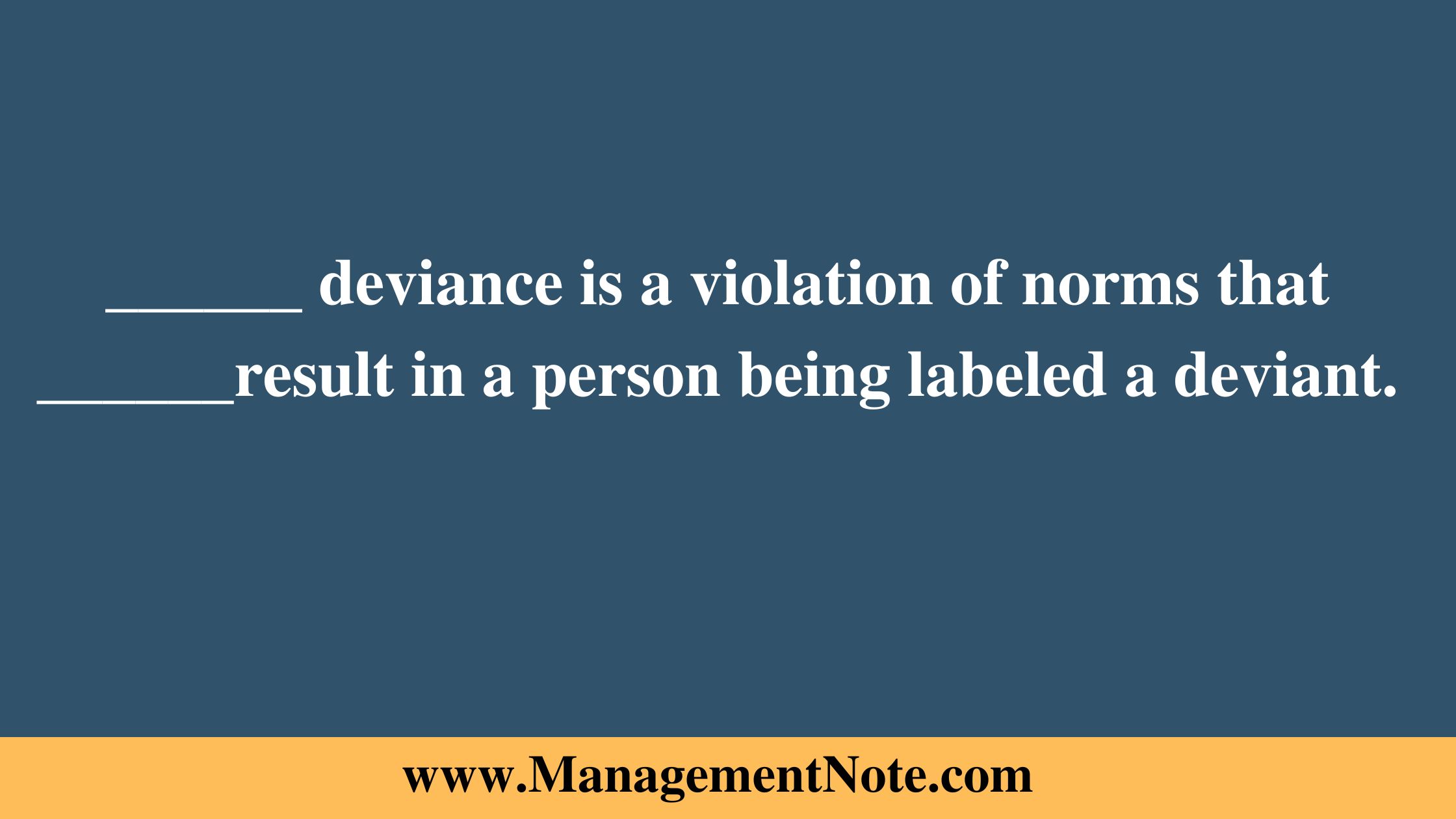Looking for the answer to the question below related to Sociology?
______ deviance is a violation of norms that ______result in a person being labeled a deviant.
Options:
| a. Secondary; does not b. Negative; does c. Primary; does not d. Primary; may or may not |
The Correct Answer Is:
- c. Primary; does not
Answer Explanation:
The concept of deviance plays a fundamental role in sociology, and understanding the various types and consequences of deviant behavior is essential for analyzing social norms and their enforcement.
Let’s examine the provided options in detail to determine why option c, “Primary; does not,” is the correct answer and why the other options are not correct.
- Primary Deviance:
Primary deviance refers to the initial act of deviance or rule-breaking that may not necessarily result in the person being labeled as deviant within society.
It implies that individuals engage in deviant behavior without necessarily adopting a deviant identity. In other words, they might commit a deviant act, but it doesn’t define their entire self-concept.
An example of primary deviance could be a teenager shoplifting once due to peer pressure, which does not automatically lead to them being labeled as a lifelong “criminal” or “thief.”
- Secondary Deviance:
Secondary deviance occurs when a person begins to identify as deviant and adopts the deviant behavior as a part of their self-concept.
This stage usually follows primary deviance and is marked by societal reactions such as labeling, stigmatization, and more frequent engagement in deviant behavior.
Returning to the example of the teenager who shoplifted once, if they are caught, labeled as a thief, and subsequently engage in more thefts as a response to their label, this would be secondary deviance.
Now, let’s examine each option:
a. Secondary; does not:
This option suggests that secondary deviance does not result in a person being labeled as deviant. However, this is not accurate.
Secondary deviance specifically involves the process of labeling and the person adopting a deviant identity as a result of societal reactions. Therefore, this option is incorrect.
b. Negative; does:
This option implies that negative deviance results in a person being labeled as deviant, which is true to some extent.
Negative deviance refers to behavior that violates established norms and is deemed unacceptable by society. This often leads to labeling and stigmatization.
However, this option does not differentiate between primary and secondary deviance, which is crucial to understanding the labeling process accurately. Therefore, it is not a complete and accurate statement.
c. Primary; does not (Correct Answer):
This option correctly identifies primary deviance and accurately states that it does not necessarily result in a person being labeled as deviant.
It reflects the sociological understanding that individuals may engage in deviant acts without society immediately branding them as deviants or criminals. Labeling typically occurs during secondary deviance.
d. Primary; may or may not:
This option is partly correct in acknowledging primary deviance but leaves room for confusion. Primary deviance “may or may not” result in labeling is a vague and ambiguous statement.
While it’s true that not all instances of primary deviance lead to labeling, it doesn’t emphasize the distinction between primary and secondary deviance as option c does. Therefore, it is less accurate and clear.
Conclusion
In summary, option c, “Primary; does not,” is the correct answer because it accurately describes primary deviance as a violation of norms that does not necessarily result in a person being labeled as deviant. The other options either mix up primary and secondary deviance or fail to provide a clear and accurate explanation of the labeling process in deviance theory.
- Price policy mainly benefits - October 1, 2022
- The three major types of ethical issues include except? - October 1, 2022
- The shortest distance between any two dots of the same color is called ………………. - October 1, 2022

